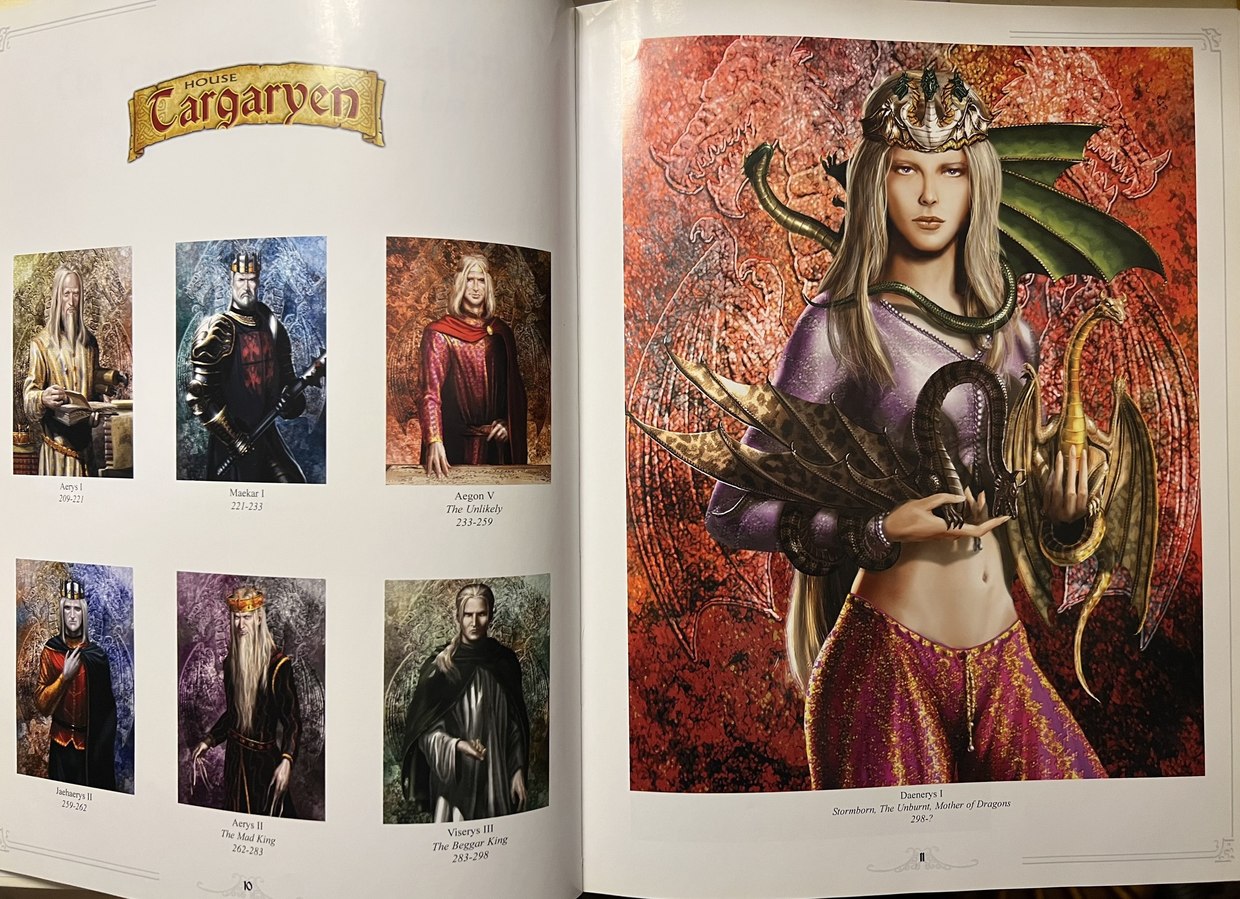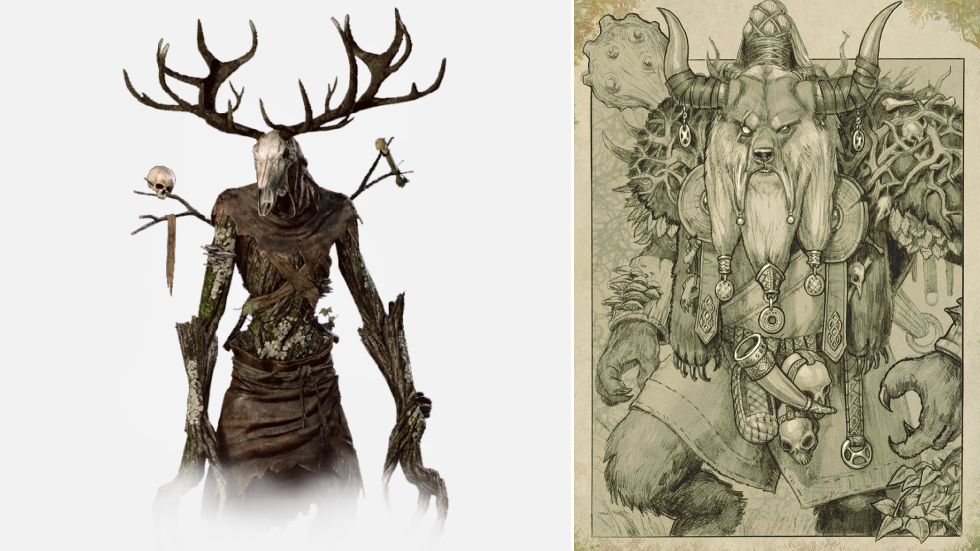Meet the artist who turns Russian folk tales into modern fantasy


When it comes to sword-and-sorcery fantasy, you could be forgiven for immediately thinking about ‘The Lord of the Rings’, ‘Game of Thrones’, ‘The Witcher’, various ‘Dungeons and Dragons’ worlds, and a hundred other pseudo-European settings before you recall anything based on Slavic mythology. Koschei the Deathless, Baba Yaga, and the three-headed Zmei Gorynych just aren’t anywhere near as mainstream as the dragons, knights, and witches we’re used to seeing in games, films, and books.
One Russian artist has set out to remedy that, utilizing his background in game development to bring Old Russian mythology to the fore.

The name Roman Papsuev might not be too widely known to Western fantasy art fans, but his nickname Amok might ring a bell for fans of George R. R. Martin’s ‘Song of Ice and Fire’ novels.
Before there was the cult TV show ‘Game of Thrones’, Roman was among the first to visualize the books’ characters – his art now adorning many of the character pages on ‘A Wiki of Ice and Fire’, like the page for Eddard ‘Ned’ Stark.
“I was a fan of ‘A Song of Ice and Fire’, and started drawing fan art and posting it to my website. Nobody asked me to do it,” Roman reminisces. “At some point, it started gaining an audience, mostly in the West, because Martin was better known there at the time. It was over 20 years ago, at the start of the century.”
Book fans started suggesting which character Roman should draw next, and as he obliged, one of the community members sent a link to his art to Martin himself.
Martin responded. He liked the art, though he did give Roman some pointers about the characters’ appearance, including things that weren’t even always in the books, so in a sense, Roman’s images are the go-to representation of what ‘Ice and Fire’ characters look like.
Then Martin recommended him to Fantasy Flight Games, for the Game of Thrones card game the company printed back in 2002. Roman made some of the cards, and later, the ‘Art of Ice and Fire’ artbook, which features a portrait gallery of the Targaryen dynasty, including characters that never appeared in the book.

Roman then spent eight years working in game development as lead artist for the Russian company Mail.ru. One of his many tasks was to create monsters for players to slay.
And then I thought, why not give them a Slavic flavor? Why not picture Russian folk tale creatures as video game characters?
There wasn’t much of a big idea behind it at first. The artist says he just took Ilya Muromets – a central hero of old Russian folklore, the best-known Bogatyr – and slapped a bunch of modern-day visual clues on him. Anyone who has ever seen Warhammer, or played World of Warcraft, will detect the vibe behind the oversized shoulder armor and giant sword.

“I wasn’t planning anything serious at first,” Roman says. “I was just doing it for myself and my followers online. But suddenly it resonated and I started developing this theme. I did have some general ideas before that, but never thought about their potential, even though I felt it was there.”
The idea caught on and grew deeper from there. Other heroes, villains, and monsters followed – Koschei the Deathless, Baba Yaga, the Leshy, and others even more obscure for the Western audience. Displaying his art online, Roman was met with a surge of interest and started putting together an entirely new setting – the Old Rus.

The Old Rus is meant neither as an accurate (pseudo)-historical representation of the ancient Kievan Rus nor a word-for-word retelling of classic folktales and myths. It’s a larger-than-life fantasy universe of its own.
“It’s a simple universe, with no connection to the real world,” Roman says. “There’s the World Tree, to which multiple worlds are connected. The world of Old Rus is called Belosvetye (a poetic rendering of, essentially, ‘The Whole Wide World’). It’s a beautiful, idealistic, fairytale Rus, which has no direct link to historical Russia. It’s populated with heroes and creatures of fairytale and myth. Like a planet of fairy tales.”

In this universe, locations and characters both retain distinctly Russian characteristics and gain attributes recognizable for a modern fantasy connoisseur. The bogatyrs – men of superhuman strength, defenders of Rus – are described as having undergone a magical transformation that turned them into virtual superheroes. Koschei the Deathless is a vampire-lich figure akin to Warcraft’s Lich King. Nightingale the Robber, a highwayman who can whistle with deadly force, became a monstrosity with sonic attacks riding mobile man-eating oaks. And Kolobok, essentially an animated, spherical loaf of bread from the most G-rated of fairy tales is... well, this:

These ‘dark fantasy’ attributes were what triggered some of the initial criticisms of Roman’s art. It was too similar to the ‘grimdark’ aesthetics of Warhammer, some commenters said, and the artist doesn’t disown his sources of inspiration.
“A videogame concept artist need only look at screenshots to recognize the visual style. I have a good understanding of the trends, the tropes, the stereotypes, the visual cues that work in games – that gave me an understanding of how to visualize my universe.”
I took an approximately Warhammer-esque style as my inspiration, because it’s more realistic than, say, Warcraft. I was looking at the titans of the industry, so it was a choice between those two.

When it comes to fairytale connections, Roman seeks to convey the essence, not retell the existing stories. Most Russians know all the Old Rus characters from their childhood, but that is part of why they aren’t very popular among adult fantasy lovers: The stories we read (or our parents read to us) as kids are the softened, childproofed versions often printed in the Soviet era, whereas the original tales and bylinas were much bloodier, grittier, and filled with grayscale morality. Think Grimms’ Fairy Tales and how they were Disneyfied, neutering out all the ‘adult’ themes.
Old Rus isn’t exactly filled with sex and violence to Game of Thrones levels, but the art books are still rated 16+ for the occasional visually disturbing themes and violent descriptions. Here’s how Roman describes Ilya Muromets from the original Slavic lore:
“Ilya is a very contradictory character. At times, he is a hero, righteous of the righteous, and at times, he turns to the Dark Side, goes on drunken rampages and destroys churches. Not to mention that in one story he kills and dismembers his own son. Hardly a role model your kids should look up to.”
Roman modernizes and streamlines this dichotomy, creating a story where Ilya, young and drunk on his newly-acquired super-strength (and literally drunk), encounters an old and wise bogatyr and attacks him at first, but gets put in his place, sobers up, and establishes a mentor-mentee relationship, an age-old archetype and very recognizable trope used in modern works.
Attempts to adapt Russian folktales for popular culture have, of course, been made, and are still being made in Russia. But in the 21st century, the most up-to-date representations are still the Soviet movies from the 1960s and 1970s…

…or cartoons from the same era…

…or the modern-day Three Bogatyrs, an animated, family-friendly, comedy franchise that wasn’t too serious about the source material to begin with, and has moved so far from it over its 11 instalments that calling it an adaptation of Russian fairy tales is questionable at best.

There is also ‘The Last Warrior’ series of films (the word ‘bogatyr’ tends to be interchangeably translated as ‘warrior’, ‘hero’, or ‘knight’ – perhaps ‘champion’ would be the most appropriate interpretation), created by Russian studios in collaboration with Disney. While boasting Disney-quality visuals and box office success in Russia, it is as far from the original mythology as Disney princess movies are from Grimms’ tales.

When it comes to ‘selling’ Slavic mythology to a Western audience, Roman believes there might be an appetite for that.
“Take for example [American comic book author Mike] Mignola, who used Slavic folklore in his ‘Hellboy’: it features both Baba Yaga and Koschei the Deathless. The Western audience already knows those images.”
But in most cases, attempts to adapt Slavic lore for the West have either been very shallow, wildly off-kilter, or heavily Westernized. The Witcher franchise, widely viewed as an example of Slavic mythology in modern culture, is in fact classic Western fantasy with a Slavic flair.
“[Witcher books author] Andrzej Sapkowski found a very good balance between the Western and the Slavic, but he mostly uses the Slavic elements as ‘work for the Witcher’ and strays pretty far away from the original mythological descriptions of the creatures.”
A good example of this is the Kikimora, which in mythology is a vaguely-defined, but almost always humanoid female spirit. In the Witcher universe, it became an insectoid monster.
In some cases, Slavic creatures were supplied with distinctly Celtic visual representations, like the Leshy, the forest spirit.

“Would the Western audience be interested in an extreme Eastern Slavic version? I don’t know, but it’s definitely worth a try,” Roman says.
Of course, Roman’s art is also a reimagining – in all likelihood, those who told the original fairy tales did not imagine their heroes as wearing full plate armor with massive pauldrons or wielding pistol-grip magic wands. But in his works, Roman hopes to capture the elusive ‘Russian spirit’. In the real world, the debate over what exactly that is has been open for decades, if not centuries – but in fairytales, it’s an in-universe concept, with Baba Yaga able to detect the presence of heroes by sniffing the air and calling out “It smells like Russian spirit in here!”

One logical way to bring the Tales of Old Rus to the world would be through games and film, and Roman says he is looking in that direction, even having had talks about animated or live-action films being made – but there’s a hitch.
“The problem is that I had the pictures, but no story behind them. There was no fiction to be adapted on screen. You have to be very bold or extremely passionate to make a movie out of a few pictures and no storyline!”
Right now, Roman and a team of Russian fantasy authors are hard at work fixing this. They have released two books in ‘The Battle for Lukomorye’ series in Russian. It’s a collection of short stories that puts the narrative meat on the bones of the setting that he started with his art.

“You can never understand the story by just looking at a picture. You look at it for a second and make a judgement. But as an artist, it takes me much more than a second to create that picture. I imbue it with my soul, my accumulated experience. Right now, my main goal is not the visual, it’s the story behind it, and I’m devoting all my strength to bringing it across through text.”
When this is done, Roman is open to proposals for any multimedia development of the Tales of Old Rus. Meanwhile, his art is available in four books, two sketch collections and the two Russian-language short story books. One more story book is in the works, and another one or two are planned, as well as at least two more volumes of a bestiary/encyclopedia series. A tabletop game named "The Legacy of Old Rus: Legend of the Serpent" is also coming up later this year.
Roman recognizes the amount of effort that would go into proper translations – texts would need to be rewritten almost from scratch, or at the very least supplied with hefty footnotes, if all the mythology and context behind the Tales is to be properly brought across to a Western audience. But he is looking for opportunities, and who knows, maybe English versions are coming soon.